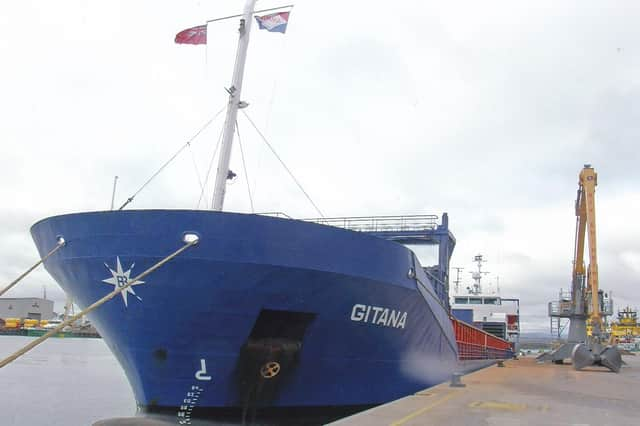Shipping Lines - Watery death then resurrection of ‘Gypsy Woman’ of Loch Rannoch


A name from the Victorian era was brought to mind with the arrival at Montrose in late February of the Dutch-owned Gitana registered at Lemmer. Inward bound from the Swedish port of Norrkoping, she was 5,019-ton deadweight, 95 metres in length and built in 2003. However, it was a much earlier vessel of that name that for me created much more interest.
An earlier Gitana was described as a steam yacht and built by T. B. (Tammy) Seath at his shipyard at Rutherglen, Glasgow in 1881 to the order of General Alastair McDonald of Dunalastair House at Kinloch Rannoch close to the east end of Loch Rannoch. The vessel was transported overland in sections and re-assembled and launched into the loch at the General’s estate.
Advertisement
Hide AdAdvertisement
Hide AdHe had hoped to use her to open up the scenery of the Rannoch area to the general public and residents of the area. Unfortunately, his neighbours were not like-minded and would not allow him to anchor his ship at the west end of the loch which was more sheltered during the winter season.
As it happened a storm rose and, having had to moor the Gitana off his estate at the other end, water entered the vessel’s unprotected glazed windows. The ship sank on 6th February of the following year. There she lay in approximately 100 feet of peaty water until a team of sub-aqua divers from England took an interest in her whereabouts.
Over a period of several years she was successfully raised but after extensive refurbishment including her engine and a lightweight cabin erected, she was anchored in almost the same spot where she first foundered. A classic case of history repeating itself. It’s a long story – but with no happy ending.
Feeling in a nostalgic mood I came across the following tale. Interested in the seismic changes in world shipbuilding since the end of World War Two. In the back of a cupboard I came across a news cuttings book I had compiled throughout the 1950s when illustrations appeared regularly of ship launches. My collection was concentrated mainly on Scottish shipyards from Aberdeen across the country to Troon and Ardrossan.
Advertisement
Hide AdAdvertisement
Hide AdTheir output included numerous types of vessel from HMY Britannia, ocean liners, cargo ships, distant water trawlers to tugs, ferries, lighthouse tenders etc. plus humble dredgers and a “sludge boat”!
The scene has changed somewhat since that book was filled. Arrivals at Montrose in recent weeks have underlined the transformation in shipbuilding output not only in central and eastern Europe with a steady move eastwards to the Indian sub-continent, south-east Asia and ultimately to the Far East. Nevertheless, there are still arrivals from shipyards located in The Netherlands even although some of the hulls have been built in Romania or Poland. Reasons for these moves include increased labour costs, steel prices, completion times etc.
Digressing for a minute, with other ports successfully attracting inwards investment in marine support bases in the late 1960s, it was inevitable that Montrose Harbour Board should look to the emerging offshore market on their doorstep. In early 1974, when giving a talk to Montrose Rotary Club, Captain Gordon Graham, then local harbourmaster, commented, “as far as he could determine not only would Montrose be established on the North Sea Oil maps but be marked with a square and not a small dot”.
From the germ of an idea in the late 1960s the port has grown to what it is today. At the time of writing, 8th March, 2023 there were four large vessels involved in the rapidly expanding offshore renewables industry alongside the original Sea Oil base.
Caption: The present day Gitana at Montrose port’s North Qua